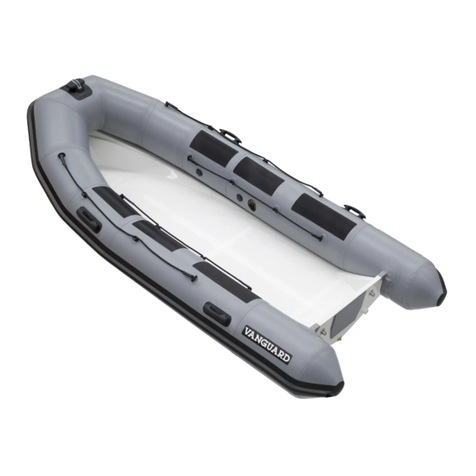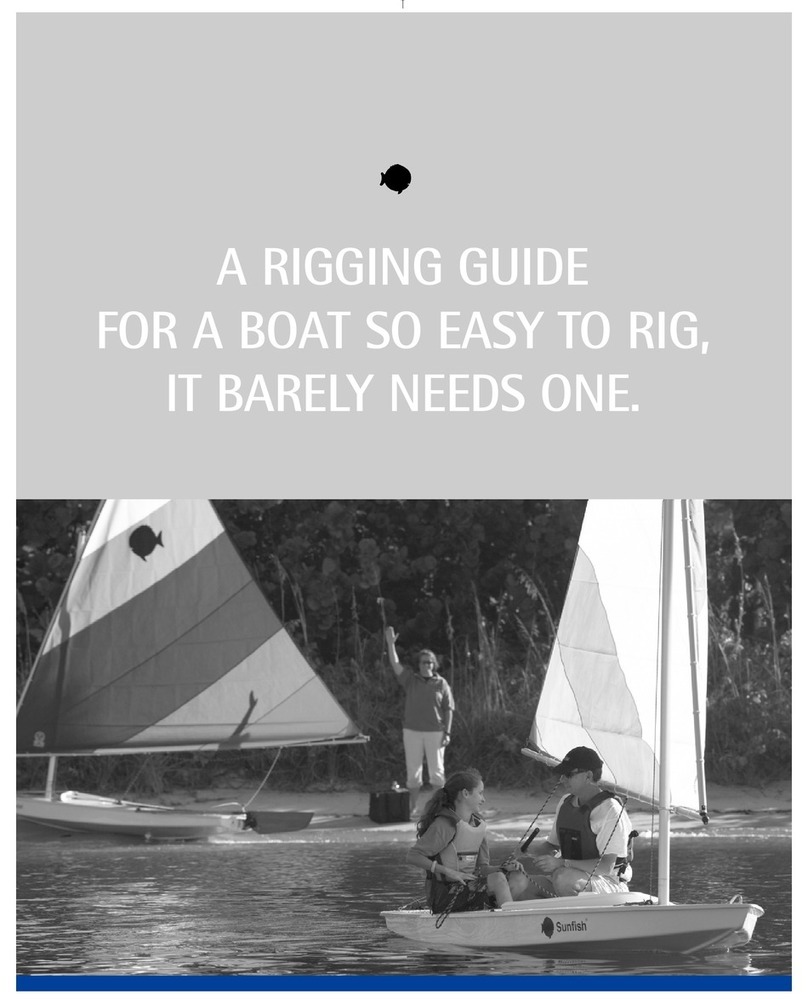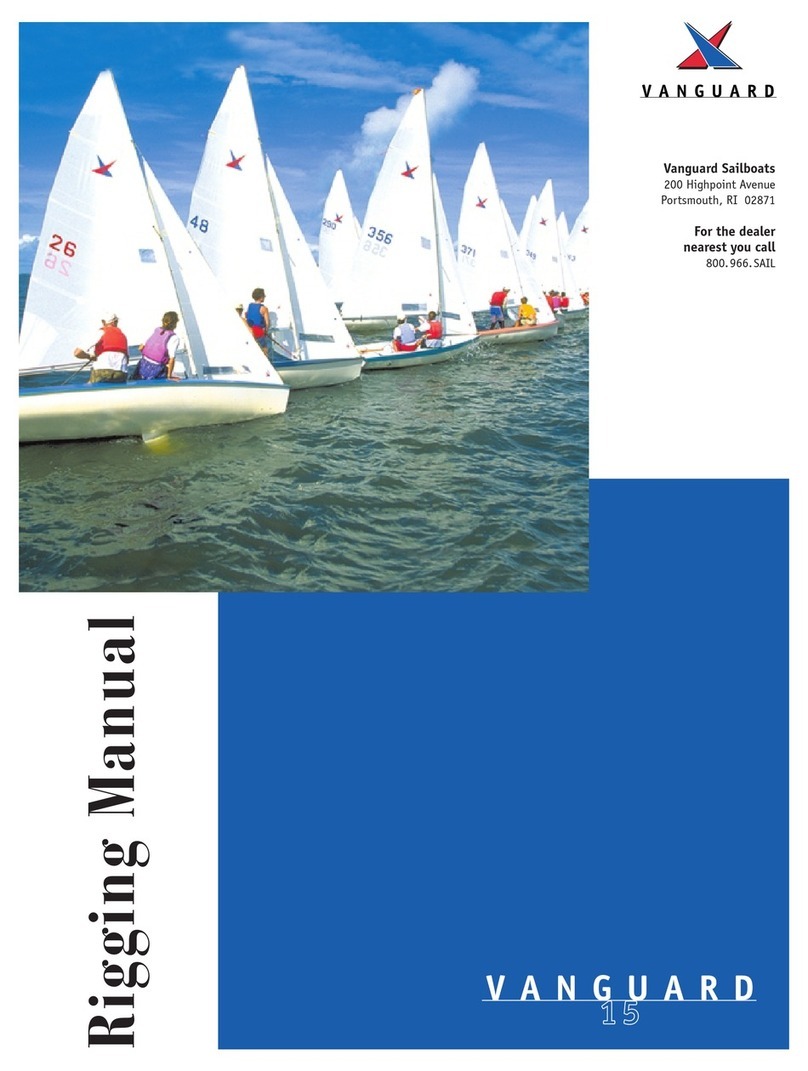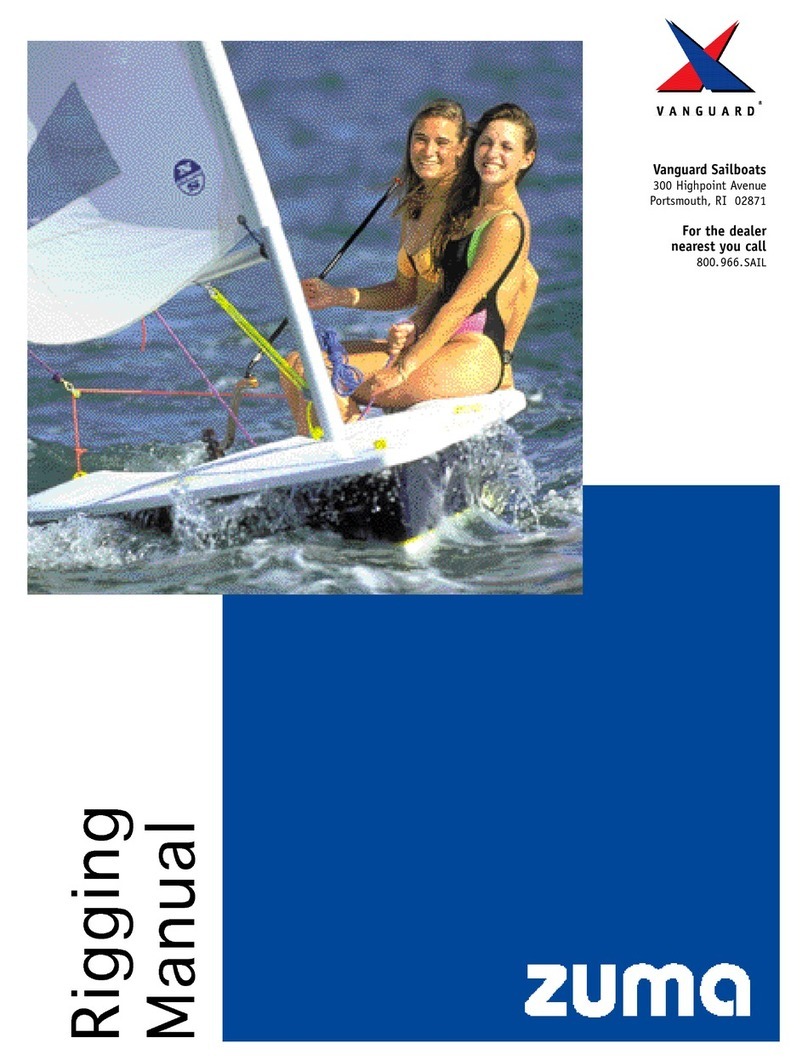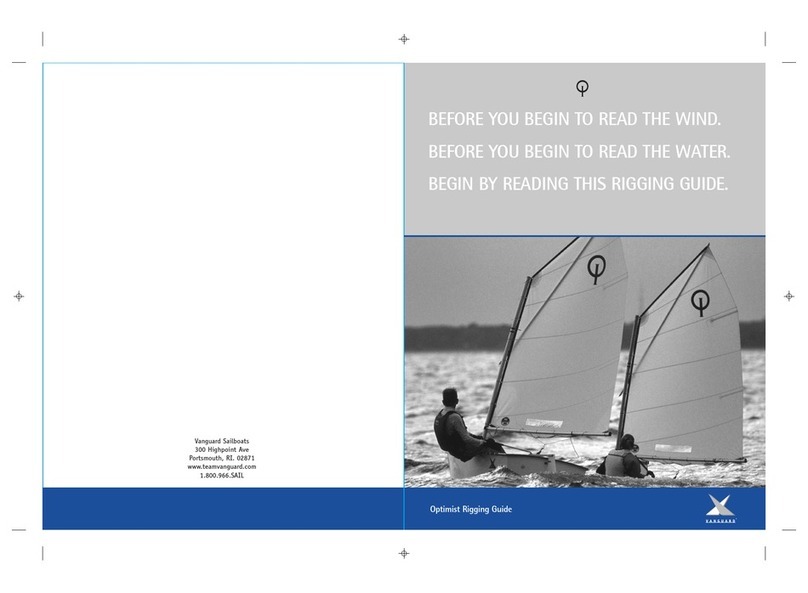2
www.te mv ngu rd.com
Before you launch
Check to make sure the hatches and stern plug are secure. Lock the
rudder up and attach it to the boat by passing the tiller under the
traveler and lining up the rudder pin with the pintles. The bottom
groove should fit into the bottom pintle, and when you push down
on the spring loaded pin, the top groove will slide into the top pintle.
Release the spring to lock the rudder in place, making sure the rud-
der is securely connected to the boat at both top and bottom.
Once in the water, slide the daggerboard into the daggerboard
trunk. (You will have to turn the boat sideways to the wind to keep
the boom clear.) Drop it down as much as depth permits. As soon as
it is deep enough, push the rudder down until it locks in place. NOW
YOU ARE READY TO SAIL. FOR YOUR OWN SAFETY, WEAR APPROPRIATE
CLOTHING AND OBTAIN PROPER TRAINING BEFORE SAILING. HAVE FUN
AND DON’T FORGET YOUR LIFEJACKET!
Furling
To reduce sail area for lighter crews or stronger winds, slack off the
vang and unclip the larger v-cleat block from the mast. Uncleat the
outhaul line and pull slack in it to release the tension on the foot of
the sail. Rotate the mast one full turn in the direction of the furling
arrows. This rolls the sail around the mast, reducing sail area (which
is called reefing), which makes the boat easier to handle. Recleat the
outhaul and pull it tight. Resecure the vang and tighten.
Unrigging
When approaching shallow water, pull up the daggerboard as much
as possible without obstructing the boom. After you hop out of the
boat, remove the daggerboard and place it in the boat, leaving the
safety line attached. Pull the rudder up until it locks and leave it
attached to the boat. Once the boat is on land, unhook the vang
from the mast and release the clew from the outhaul hook. Roll up
the sail, following the arrows, until the entire sail is furled, then clip
the furling strap around the sail and mast. Make sure the sail is furled
tightly so that it doesn’t unroll on its own. If the boat is staying put,
you can leave everything else on the boat; simply rehook and snug
the vang, and tighten up the mainsheet to keep the boom from moving
around.
All gear should be washed with fresh water, if sailing in salt water,
and the sail should be allowed to dry before it is rolled up.
Launching
Turn to Furl






